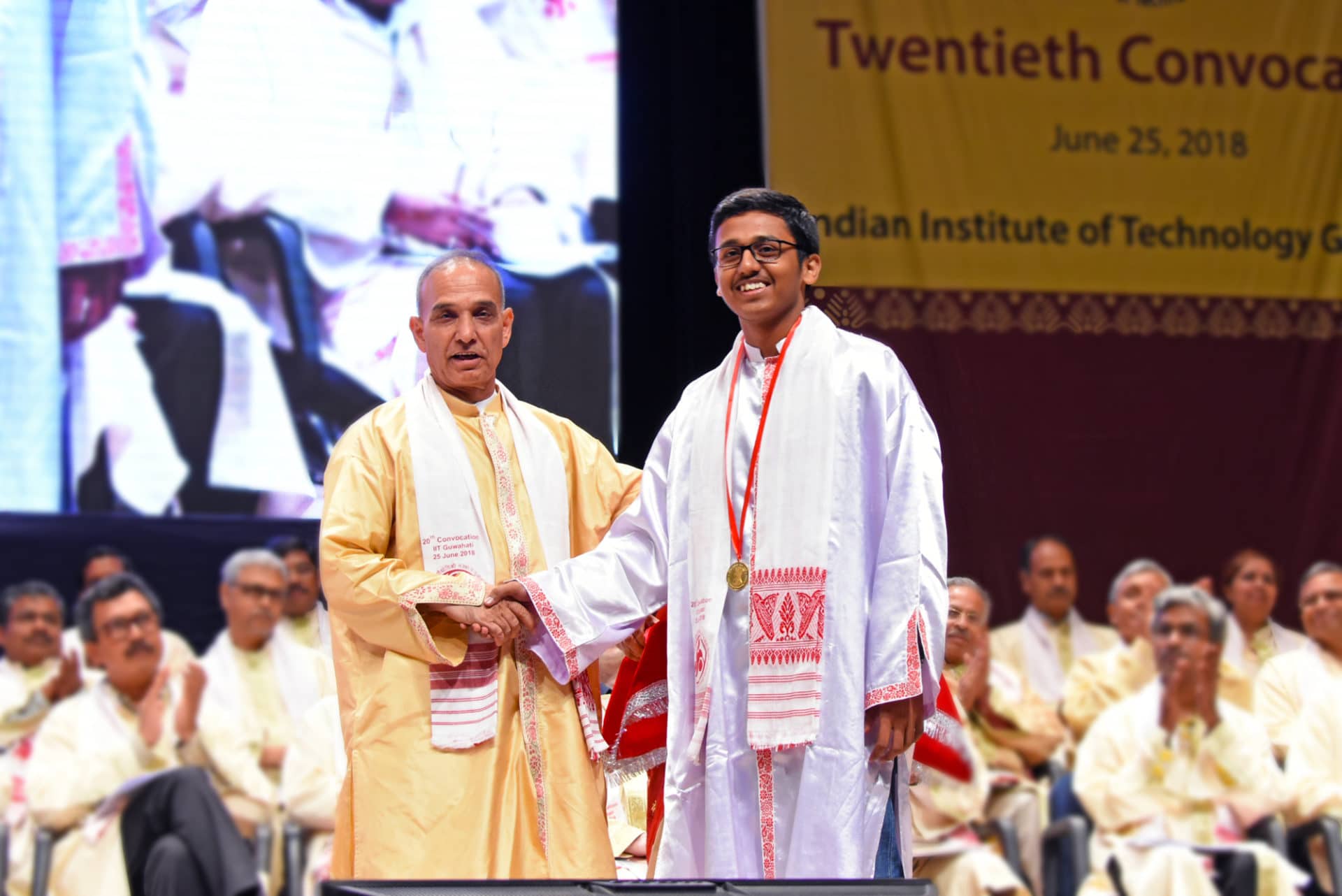To Study in Poland, you must select a University that best suits your Pursuit and Goals. In that regard, we have prepared some updates for Students wishing to Study in Poland, not just in Poland but in Warsaw University.
So, if you are interested in studying at Warsaw university in Poland and need reliable information about the university, this post is all you need.
This post provides information about Warsaw University in Poland, including how to get in. You can scroll the table of contents below to get an overview of all this post entails.
Table of contents
About Warsaw University
Warsaw University has been a favorite Choice for international students in Poland. The University has the Best MBA Programmes, Masters Degree Courses, and Undergraduate Courses to mention just but a few.
Research-wise, the School is blessed with Highly Skilled professionals well-recognized in Europe to take your dreams a step higher.
To Study at Warsaw University, we have prepared updates on Admission, Courses Offered, Rankings, Scholarships, etc., just for you. Before we break these updates down, we will go through the memory lane of Warsaw University briefly.
The University of Warsaw was established in 1816; it’s the biggest university in Poland, with over six thousand (6,000) staff, including over three thousand, one hundred (3,100) academic educators.
It provides graduate courses for 53,000 students (on top of over 9,200 postgraduate and doctoral candidates). The University offers some 37 different fields of study, 18 faculties and over 100 specializations in Humanities, technical and Natural Sciences.
It was established as a Royal University on the 19th of November 1816, when the Partitions of Poland alienated Warsaw from the oldest and most significant University of Kraków. Alexander, I granted permission for the institution of five faculties – law and political science, medicine, philosophy, theology, and the humanities.
The university expanded rapidly but was closed during November Uprising in 1830. It was reopened in the year 1857 as the Warsaw Academy of Medicine, currently based in the nearby Staszic Palace with only medical and pharmaceutical faculties.
All Polish-language campuses were closed in 1869 after the failed January Uprising, but the university managed to train three thousand (3,000) students, many of whom were an important part of the Polish intelligentsia; meanwhile, the major Building was reopened for training military personnel.
The university was revived during the First World War and the number of students attains four thousand, five hundred (4,500) in the year 1918.
After Poland’s independence, the new government focused its attention on improving the university; the university later became the largest university in Poland in the early 1930s. New faculties were established, and the prospectus was comprehensive.
Following the 2nd World War and the desolation of Warsaw, the University successfully reopened in 1945. Currently, the University of Warsaw consists of one hundred and twenty-six (126) buildings and educational complexes with over 18 faculties.
Warsaw University History
Poland’s partitions left Warsaw in 1795 with access only to the Academy of Vilnius; the oldest and most influential Polish academic center, the University of Kraków, became part of Habsburg Austria.
In the year 1815, the newly established autonomous Congress, Poland de facto belonging to the Russian Empire initiated itself without a university at all, as Vilnius was integrated into Russia.
The Law School and the Medical School were the first to be established in Congress Poland. In the year 1816 Tsar Alexander I allowed the Polish authorities to create a university, comprising five departments: Law and Administration, Philosophy, Medicine, Theology, and Art and Humanities.
The university soon grew to 800 students and 50 professors. After the majority of the students and professors took part in November 1830 Uprising the university was closed down.
After the Crimean War, Russia entered a brief period of liberalization, and the permission was given to create a Polish medical and surgical academy “Akademia Medyko-Chirurgiczna” in Warsaw.
Departments of Law and Administration, Philology and History, and Mathematics and Physics were opened in the year 1862.
The newly established academy gained magnitude and was soon renamed the “Main School” (Szkoła Główna). Though, after the January 1863 Uprising, the liberal period ended and all Polish language schools were closed down again.
All through its short existence, the Main School educated over three thousand (3,000) students, many of whom became part of the backbone of the Polish intelligentsia.
Later on, the major School was replaced with the Russian language “Imperial University of Warsaw”. The right of the Imperial University of Warsaw’s intention was to offer education for the Russian military garrison of Warsaw, the majority of students (amounting to 70 percent (%) out of an average of 1,500 to 2,000 students) were Poles.
The tsarist authorities thought that the Russian university would become a perfect way to Russify Polish society and exhausted an important sum on building a new university campus.
Though a variety of underground organizations soon started to grow, the students became their leaders in Warsaw. The majority of notable ups (the supporters of Polish revival and the socialists) joined the ranks of the year 1905 Revolution.
Afterward, a boycott of Russian educational facilities was proclaimed, and the number of Polish students dropped to below 10 percent (%). Most students who wanted to continue their education left for Galicia and Western Europe.
After the fall of the January Uprising (1863–1864), the Tsarist authorities’ decided to convert the Main School into a Russian-language university, which functioned under the name of Imperial University for 46 years.
Two times, the question of moving the university to Russia was considered. Around the year 1905 1907 revolution, some professors made such a proposal in the face of a boycott of the university by Polish students.
Talks on that subject were conducted with several Russian cities, including Voronezh and Saratov. The Russian government finally decided to keep a university in Warsaw. Still, due to the boycott, the university was Russian not only in the sense of the language used but also of the nationality of its professors and students.
For the second time, the question emerged during the First World War, when the military and political situation forced the Russian authorities to evacuate.
Beginning from the autumn of the year 1915, there were two Universities of Warsaw: one Polish, in Warsaw, and another Russian, in Rostov-on-Don which functioned until the year 1917.
On 5th May 1917, the Russian Provisional Government decided to close the University of Warsaw. The decision took effect on 1st July 1917; on the same day, the University of the Don was inaugurated.
Throughout World War I Warsaw was seized by Germany in the year 1915. In order to win the Poles for their case and secure the Polish area behind the front lines, the governments of Germany and Austria-Hungary allowed for a certain liberalization of life in Poland.
By the concept of Mitteleuropa, German military authorities permitted several Polish social and educational societies to be recreated.
One of these was the University of Warsaw. The Polish language was reintroduced, and the professors were allowed to return to work.
In order not to let the Polish patriotic movement out of control the number of lecturers was kept low (usually not more than 50), but there were no limits on the number of students. Until 1918, their number rose from a mere 1,000 to over 4,500.
The Second Polish Republic
In 1918, after Poland regained its independence, the University of Warsaw began to overgrow. It was reformed; all the important posts (the rector, Senate, deans, and councils) became democratically elected, and the state spent considerable amounts of money to modernize and equip it.
Many professors returned from exile and cooperated in the effort. By the late 1920s, the level of education in Warsaw had reached that of western Europe.
As at the beginning of year 1930s the University of Warsaw had become the biggest university in Poland, with over 250 lecturers and 10,000 students. However, the financial problems of the newly reborn state did not allow for free education, and students had to pay a tuition fee for their studies (an average monthly salary, for a year).
Also, the number of scholarships was very limited, and only approximately 3 percent (%) of students were able to get one. In spite of these economic problems, the University of Warsaw grew rapidly.
New departments were opened, and the main campus was stretched. After the death of Józef Piłsudski the Senate of the University of Warsaw changed its name to “Józef Piłsudski University of Warsaw” (Uniwersytet Warszawski im. Józefa Piłsudskiego). The Sanacja government proceeded to limit the autonomy of the universities.
Professors and students remained divided for the rest of the year 1930s as the system of isolated seating for Jewish students, known as ghetto benches, was implemented customarily, not institutionally, which should be noted; equivalent to the era of the Civil rights movement in the United States.
Many students took part in the Warsaw Uprising as soldiers of the Armia Krajowa and Szare Szeregi. The German-held campus of the University was turned into a fortified area with bunkers and machine-gun nests.
It was located close to the buildings occupied by the German garrison of Warsaw. Heavy fights for the campus started on the first day of the Uprising, but the partisans could not break through the gates.
Several assaults were bloodily repelled and the campus remained in German hands until the end of the fights. During the uprising and the occupation 63 professors were killed, either during fights or as an effect of the German policy of extermination of Polish intelligentsia.
The University lost 60% of its buildings during the fighting in 1944. A large part of the collection of priceless works of art and books donated to the University was either destroyed or transported to Germany, never to return.
Towards mid -1960s the government started to restrain freedom of thought, which led to increasing strife amongst the students.
A political struggle within the communalist party prompted Zenon Kliszko to ban the production of Dziady by Mickiewicz at the Polish Theatre, leading to year 1968 Polish political crisis coupled with anti-Zionist and anti-democratic campaigns and the eruption of student demonstrations in Warsaw, which were viciously crushed – not by police, but by the ORMO reserve militia squads of plain-clothed workers.
As a result, many students and professors were barred from the university. However, the University remained the center of free thought and education. Professors expressed what they could not articulate during lectures during informal meetings with their students.
A lot of them became leaders and prominent members of the Solidarity movement and other societies of the democratic opposition which led to the disintegration of communism. Various scientists working at the University of Warsaw were also among the major printers of books banned by censorship.
Masters Degree Programs – 1st, 2nd, 3rd cycle
The University of Warsaw is amongst the top 3 percent (%) of the world’s universities according to global ranking such as Times Higher Education World University Ranking (THE), Quaquarelli Symmonds World University Ranking [QS], Academic Ranking of World Universities (ARWU).
17 programs provided by UW have been listed in QS World University Rankings by Subject 2024. 15 programs offered by UW have been listed in Eduniversal Best Masters & MBA Ranking 2024.
The candidates are offered a wide choice of programs in humanities, social and natural science, as well as numerous interdisciplinary programs that combine knowledge and skills in various fields.
Best Masters and MBA Programs
Nine (9) study programs offered at the University of Warsaw were ranked in the Eduniversal best masters ranking.
Annually, Eduniversal publishes its official ranking for the 4000 best masters and MBA programs in 30 fields of studies worldwide. The following programs of University of Warsaw are ranked in the Eduniversal best masters ranking:
M.A. in Finance and Accounting
TOP 200 – Regional ranking within the 9 geographical zones
Ranked N°3 in Accounting and Auditing, Eastern Europe
Postgraduate Studies in Public Relations Strategy and Social Communications
TOP 200 – Regional ranking within the 9 geographical zones
Ranked N°3 in Communications, Eastern Europe
Master in Environmental Management
TOP 100 – Global ranking
Ranked N°64 in Sustainable Development and Environmental Management, Worldwide
Quantitative Finance
TOP 100 – Global ranking
Ranked N°20 in Financial Markets, Worldwide
Global MBA
TOP 200 – Regional ranking within the 9 geographical zones
Ranked N°2 in General Management, Eastern Europe
International Business Program IBP
TOP 200 – Regional ranking within the 9 geographical zones
Ranked N°3 in International Management, Eastern Europ
Executive MBA at the University of Warsaw
TOP 200 – Regional ranking within the 9 geographical zones
Ranked N°4 in Executive MBA & MBA part-time, Eastern Europe
International MBA Programme
TOP 200 – Regional ranking within the 9 geographical zones
Ranked N°1 in MBA full time, Eastern Europe
International Economics
TOP 200 – Regional ranking within the 9 geographical zones
Ranked N°2 in Economics, Eastern Europe
Below are Courses offered by Warsaw University, viz:
- Applied Linguistics
- Psychology
- Political Science and International Relations
- Chemistry
- Education
- Geography and Regional Studies
- Geology
- History
- Applied Social Sciences and Resocialization
- Law and Administration
- Journalism, Information, and Bibliology
- Management
- Liberal Arts
- Mathematics, Informatics, and Mechanics
- Modern Languages
- Oriental Studies
- Economic Sciences
- Philosophy and Sociology
- Biology
- Physics
- Polish Studies
Warsaw University Ranking
The university is among the top Polish Universities. It was ranked by Perspektywy magazine as best Polish university for the years 2010, 2011, 2014 and 2016. International rankings like ARWU and University Web Ranking rank the university as the best Polish higher-level institution.
On the list of 100 best European universities compiled by University Web Ranking, the University of Warsaw was placed as 61st. QS World University Rankings positioned the University of Warsaw as the best higher-level institution among the world’s top 394th.
Notable Alumni
- Andrzej Kalwas (b. 1936), lawyer, businessman, and former Polish Minister of Justice
- Krzysztof Kamil Baczyński (1921–1944), poet, Home Army soldier killed in the Warsaw Uprising.
- David Ben-Gurion (1886–1973), 1st Prime Minister of Israel (1948–53; 1955–63)
- Tadeusz Borowski (1922–1951), poet, writer
- Marian Brandys (1912–1998), writer, journalist
- Włodzimierz Cimoszewicz (b. 1950), politician, Prime Minister of Poland (1996–1997), Marshal of the Sejm (2005)
- Joseph Epstein (1911–1944), communist leader of the French resistance
- Lech Gardocki (b. 1944) lawyer, judge, and former First President of the Supreme Court of Poland
- Małgorzata Gersdorf (b. 1952), lawyer, First President of the Supreme Court of Poland
- Witold Gombrowicz (1904–1969), writer
- Hanna Gronkiewicz-Waltz (b. 1952), politician, President of the National Bank of Poland (1992–2001), Mayor of Warsaw (since 2006)
- Jan T. Gross (b. 1947), historian, writer, Princeton University professor
- Gustaw Herling-Grudziński (1919–2000), journalist, writer, Gulag survivor
- Leonid Hurwicz (1917–2008), economist, mathematician, Nobel Prize in Economics winner (2007)
- Czesław Janczarski (1911–1971), poet and Russian literature translator
- Jarosław Kaczyński (b. 1949), politician, Prime Minister of Poland (2006–2007)
- Lech Kaczyński (1949–2010), politician, Mayor of Warsaw (2002–2005), President of Poland (2005–2010)
- Aleksander Kamiński (1903–1978), writer, leader of Polish Scouting and Guiding Association
- Ryszard Kapuściński (1932–2007), writer and journalist
- Bronisław Komorowski (b. 1952), politician, Marshal of the Sejm (2007–2010), President of Poland (2010–2015)
- Alpha Oumar Konaré, (b. 1946), 3rd President of Mali (1992–2002)
- Janusz Korwin-Mikke (b. 1942), conservative-liberal politician and journalist
- Marek Kotański (1942–2002), psychologist and streetworker
- Jacek Kuroń (1934–2004), historian, author, social worker, and politician
- Jerzy Łojek (1932–1986), historian, writer
- Karol Modzelewski (b. 1937), historian, politician
- Jerzy Neyman (1894–1981), mathematician, statistician, University of California professor
- Jan Olszewski (b. 1930), lawyer, politician, Prime Minister of Poland (1991–1992)
- Janusz Onyszkiewicz (b. 1937), politician
- Bohdan Paczyński (1940–2007), astronomer
- Krzysztof Piesiewicz (b. 1945), lawyer, screenwriter
- Adam Przeworski (b. 1940), political scientist, New York University professor
- Emanuel Ringelblum (1900–1944), historian, founder Emanuel Ringelblum Archives of Warsaw Ghetto
- Józef Rotblat (1908–2005), physicist, Nobel Peace Prize winner (1995)
- Stanisław Sedlaczek (1892–1941), social worker, leader of Polish Scouting and Guiding Association
- Wacław Sierpiński (1882-1969), mathematician
- Dmitry Strelnikoff (b. 1969), Russian writer, biologist, a journalist for the media
- Kazimiera Szczuka (b. 1966), literary critic, feminist, LGBT rights activist, television personality
- Alfred Tarski (1902–1982), logician, mathematician, member of the Lwów-Warsaw school of logic
- Władysław Tatarkiewicz (1886–1980), philosopher, historian of esthetics
- Julian Tuwim (1894–1953), poet and writer
- Janusz Andrzej Zajdel (1938–1985), physicist and science-fiction writer
- Paweł Zarzeczny (1961-2017), sports journalist, columnist, and TV personality
- Anna Zawadzka (1919–2004), social worker, leader of Polish Scouting and Guiding Association
Tuition fees for studies at Warsaw University
Click Here To Download Full Tuition Fee >
Warsaw University Admissions
The University of Warsaw welcomes both undergraduate and graduate applicants study programs conducted in English. Candidates may enroll in most of those degree programs mid of July annually.
Programs of study for social sciences, humanities as well as exact and natural sciences, are in the study offer of the University of Warsaw. Polish and international applicants can participate in the academic year’s recruitment procedure for English-language studies.
Application for long-term studies at the University of Warsaw may be done only via the internet. It is the first step of admission procedure obligatory for all candidates.
Warsaw University Scholarships
Scholarship opportunities are available at Warsaw University, all interested candidate is expected to apply for the scholarships before it’s the deadline.
This scholarship is available for both domestic and International Students.
Scholarship Description
Scholarships are obtainable to both graduate and undergraduate from all the faculties of the intuition.
Scholarships are awarded to study any of the courses offered by the university.
Scholarship Award: The grant covers the whole or a part of the tuition fee at Warsaw University.
Number of Scholarships: Not specified.
Scholarship can be taken in Poland
Application Process
All applicants should apply through the scholarship Link below before the deadline date.





